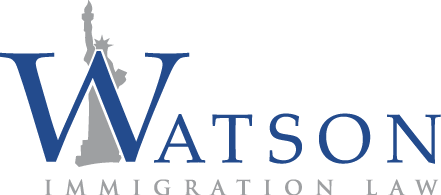I often refer to April 1st as the business immigration lawyers ‘tax day’. Every year, the government has a cap of 65000 H1b visas for people with a Bachelor’s degree and an additional 20,000 reserved for those who have a Master’s or higher degree from a US university. The visa starts from October 1st each year, which is the beginning of the government fiscal year. One can apply for a work visa 6 months in advance of the start date. And April 1st is 6 months in advance of October 1st. Hence the deadline!
As the economy has recovered and companies are hiring again, there are simply not enough visas to meet demand. Therefore, filing on April 1st is the holy grail. However, if for any reason, one cannot file on April 1st, the government keeps the filing window open for 5 days. So, the last day one can really file is April 5th. Closer to the time, USCIS will issue a notice of when the last date will be. Once all applications are received, USCIS will enter those on the database. Around April 28th (each year, the government will specify a date), the computers conduct a random selection process- commonly referred to as the ‘lottery’. If you ‘win’ the lottery, your application will then be processed. If you are unfortunate not to be selected, it can take upto June to receive the entire filing back, including your filing fee checks, with a blue sheet on top basically stating ‘thanks for applying, better luck next time!”.
If your application is selected, and you file via premium processing or ‘expedited services’, then you will receive an email around April 29th with a case number. It will then take 15 days for the USCIS to process your case or to send you a request for further evidence (RFE). If you receive an RFE, you will be given a deadline within which to respond. My advice to all is respond as quickly as practicable (never skimp on quality to save time!). Once the response is received by USCIS, a decision will be made within 15 days.
If your case is filed under regular processing, a receipt will likely take about 2-3 weeks to arrive. You will then hear back within about 2-3 months with either an approval or a request for further evidence. If an RFE is issued, you will be given a deadline and upon receipt of your response, USCIS will likely take another month or so to make a decision.
If you receive an approval and you are in the US changing from another status, you can transition into H1b on October 1st. If you are outside the US, you will apply for a visa at your local embassy. 10 days prior to Oct 1st, you will be allowed to enter into the US on H1b status.
Preparation for H1bs can take several weeks- comfortably about 5-6 weeks. However, at a minimum it can take 3-4 weeks. One of the prerequisites of filing an H1b is to obtain a certified Labor Conditions Application (LCA) from the Department of Labor (DOL). If your company has not applied for an H1b before, DOL will need additional time to enter company information on the DOL database. But as we get closer to the month of March and the DOL usage rises to its peek, the website either slows down or crashes. So, it is imperative that H1b cap applicants take that into account for preparation time.
Last year, USCIS received about 225,000 applications. My guess is that USCIS will receive more than last year, likely closer to 300,000. So getting your application together sooner rather than later is important.
Good luck!

